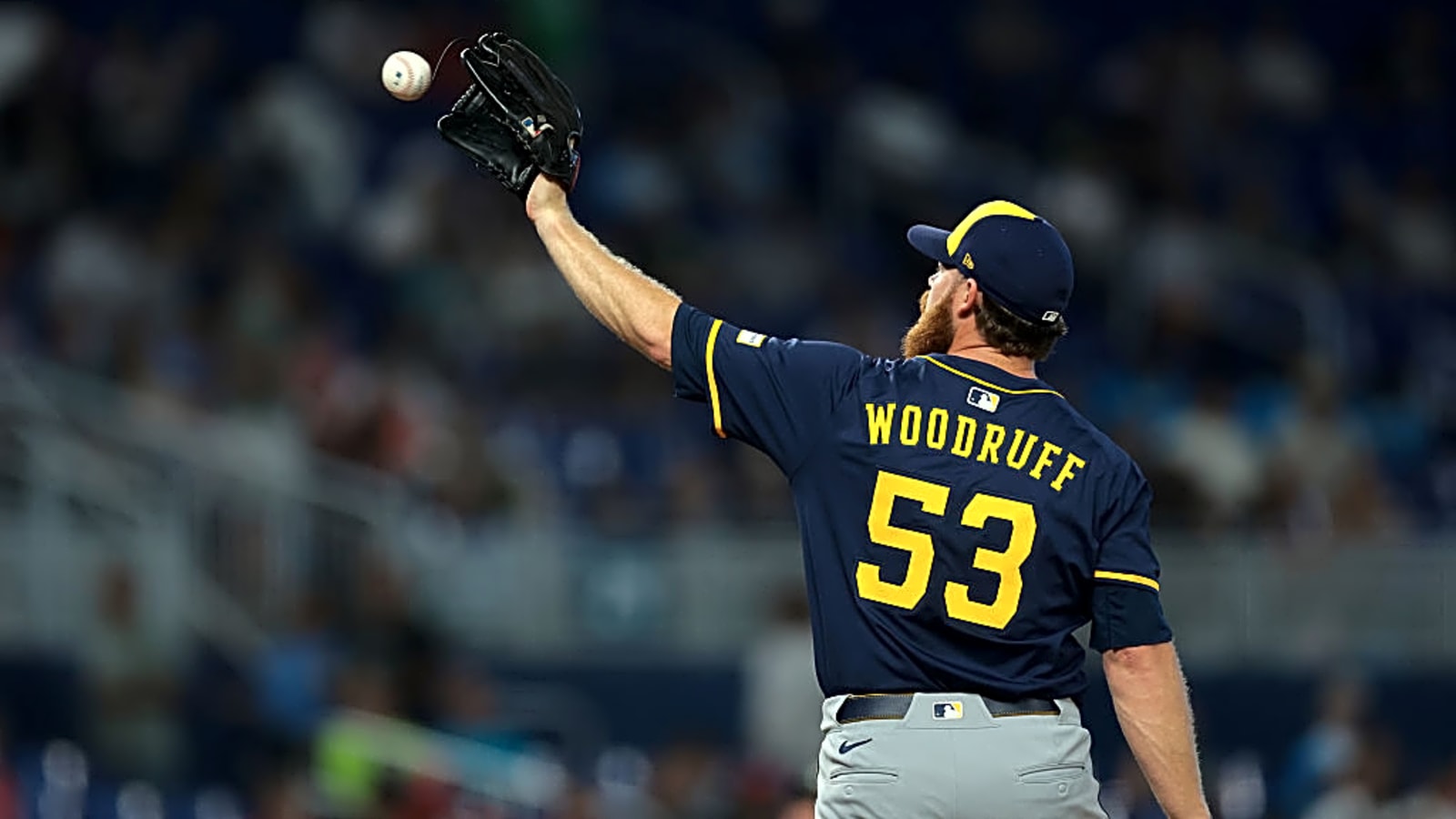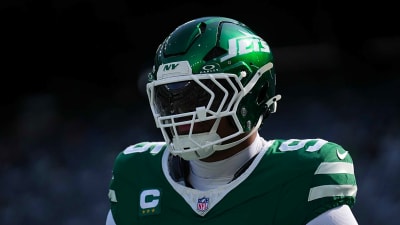
On Thursday, five days after the conclusion of the World Series, 13 free agents received qualifying offers from their former teams. Most of them will surely reject the one-year, $22.025 million contract, holding out for several more years and tens (if not hundreds) of millions more dollars.
Those free agents, for whom the qualifying offer was little more than a formality, include Kyle Tucker, Bo Bichette, Dylan Cease, Framber Valdez, Kyle Schwarber, Ranger Suárez, Edwin Díaz, Michael King, and Zac Gallen.
However, the other four of the 13 have a little more to think about. For these four, $22.025 million might be more than they could earn for a single year on the open market. So, perhaps they could maximize their earnings by accepting the offer, increasing their value in 2026, and returning to free agency next winter – without the qualifying offer to drag them down.
It’s unlikely that all four of these free agents will take the offer. Only 13 players have accepted the QO since it was first implemented in 2012, and never more than three in the same offseason.
Three free agents accepted the QO in 2015 (Matt Wieters, Colby Rasmus, and Brett Anderson), while two accepted in 2016 (Neil Walker and Jeremy Hellickson), 2019 (Jose Abreu and Jake Odorizzi), and 2020 (Marcus Stroman and Kevin Gausman). No more than one has accepted it in any offseason since.
Is it possible that all four players I’m about to discuss will accept their qualifying offers? Sure. But if they do, it would be the first time that’s happened in the 14-year history of the qualifying offer system.
Brandon Woodruff, RHP (MIL)
When he’s healthy, Brandon Woodruff is one of the best pitchers in baseball. The two-time All-Star owns a 53-28 record and a 3.10 career ERA. Since his debut in 2017, only four pitchers (min. 500 IP) have both a higher strikeout rate and a lower walk rate, and all four have won Cy Youngs (Chris Sale, Jacob deGrom, Max Scherzer and Gerrit Cole).
Of course, when any sort of praise starts with “when he’s healthy,” you know what’s coming next. Woodruff has only reached 30 starts once in his career. He’s only pitched 23 games over the past three seasons: 11 in 2023, none in ’24, and 12 this past season.
To his credit, Woodruff looked as dominant as ever when he took the mound in 2025, posting a career-high 32.3% strikeout rate, a career-low 5.4% walk rate, and the lowest xERA in the National League. On the other hand, he’ll be 33 next year, he finished the season on the IL with a lat strain, and he hasn’t had a full, healthy season since 2021.
So, should Woodruff pursue the highest guarantee he can find this winter, knowing he’s not getting any younger and further injuries will always be a possibility? Or should he take the QO, hope to stay healthy in 2026, and cash in next winter?
I still think Woodruff could do better than the QO, even if he’s looking for a pillow contract. He’s the perfect candidate for a one-year deal with a high AAV and a player option for 2027.
That said, there’s always the possibility he just wants to stay in Milwaukee. After all, if Shane Bieber was happy to stay in Toronto for $16 million, it’s not hard to imagine Woodruff taking $22.025 million to stick with the only franchise he’s ever known.
Shota Imanaga, LHP (CHC)

I’ll admit, I was skeptical of everyone who suggested Shota Imanaga could end up a free agent this winter, and I was wrong.
Then, I was sure that if the Cubs didn’t want Imanaga at three years and $57.75 million, they wouldn’t want him at one year and $22.025 million. I was wrong again.
So, now I’m scared to make any more predictions involving Imanaga.
We know he’s already rejected what was essentially a two-year, $30.5 million contract with an opt-out after 2026. We know the Cubs didn’t think he was worth a $19.25 million annual salary over three years. But that’s it.
Before he injured his hamstring and lost almost two months of his 2025 season, Imanaga had a 2.89 ERA and 3.64 xERA in his first 37 MLB starts. Despite his struggles down the stretch this year, those numbers, along with his reputation from Japan, should be enough to intrigue some suitors this winter.
Imanaga probably couldn’t command a $22.025 million annual salary on the open market. But I could see him landing something not so far off from three years and, say, $55 million from a team with a little more faith in him than Chicago.
That should be enough to convince him to reject the qualifying offer – unless he’s confident he can boost his value enough in 2026 to earn an even more lucrative deal next winter. Ultimately, that’s the big question for all four players I’m discussing in this article.
I don’t know what’s going to happen, but I do know what would be the funniest possible outcome: Imanaga takes the qualifying offer and pitches so well in 2026 that he makes the Cubs regret not picking up their option when they had the chance.
Trent Grisham, CF (NYY)

If Trent Grisham believes in himself, accepting the qualifying offer should be a no-brainer.
The center fielder was worth way more than $22.025 million to the Yankees in 2025, slugging 34 home runs en route to an .811 OPS, 129 wRC+, and 3.2 FanGraphs WAR. However, this was the first time since the shortened 2020 season that he put up numbers of that caliber.
As terrific as his walk year was, teams will be hesitant to offer Grisham big bucks this winter out of fear that he’ll regress to his 2022-24 self – a player that hit below .200 all three seasons, with just 39 home runs in close to 1,300 trips to the plate.
If Grisham accepts the qualifying offer and repeats his 2025 campaign, he could re-enter free agency a year from now and ask for way more than he’d be able to command this winter.
The fear, however, is that he takes the QO and does indeed regress. If 2026 Grisham looks more like 2024 Grisham than 2025 Grisham, he would surely regret taking the QO instead of seeking the highest possible guarantee.
Gleyber Torres, 2B (DET)

At first, I was quite surprised to see Gleyber Torres on the list of qualifying offer recipients. Yet, after mulling over his case, I realized it actually made a lot of sense for the Tigers to make him the offer.
If he accepts, they get him back for only $7 million more than they paid last winter. Considering he’s coming off a much better season, that’s not a bad deal.
A repeat of his 2025 performance (113 wRC+, 2.6 fWAR) would be perfectly good value for that money. If he plays more like he did in the first half, before a sports hernia started causing him significant pain, a one-year, $22.025 million commitment would be a steal.
From Torres’s perspective, $22.025 million is probably a higher annual salary than he could command on a long-term deal right now. And while he might be antsy to sign a multi-year contract after settling for a pillow deal last winter, he’s young enough that he can bet on himself one more time. If he takes the QO, he’ll still only be entering his age-30 season when he returns to free agency in 2026.
It’s no slam dunk that Torres will take the qualifying offer. None of these players is a slam dunk to accept. If they were, their former teams wouldn’t have made them the offers in the first place.
At the same time, I wouldn’t be shocked to hear that any of them had accepted. $22.025 million ain’t chump change, and all four of Woodruff, Imanaga, Grisham, and Torres could put themselves in a better position to earn big next offseason with a strong 2026 campaign.
More must-reads:
- Japanese 3B Munetaka Murakami to be posted Friday
- Kyle Tucker, Kyle Schwarber among 13 players to receive qualifying offers
- The 'World Series MVPs' quiz
Breaking News
Trending News
Customize Your Newsletter
 +
+
Get the latest news and rumors, customized to your favorite sports and teams. Emailed daily. Always free!








